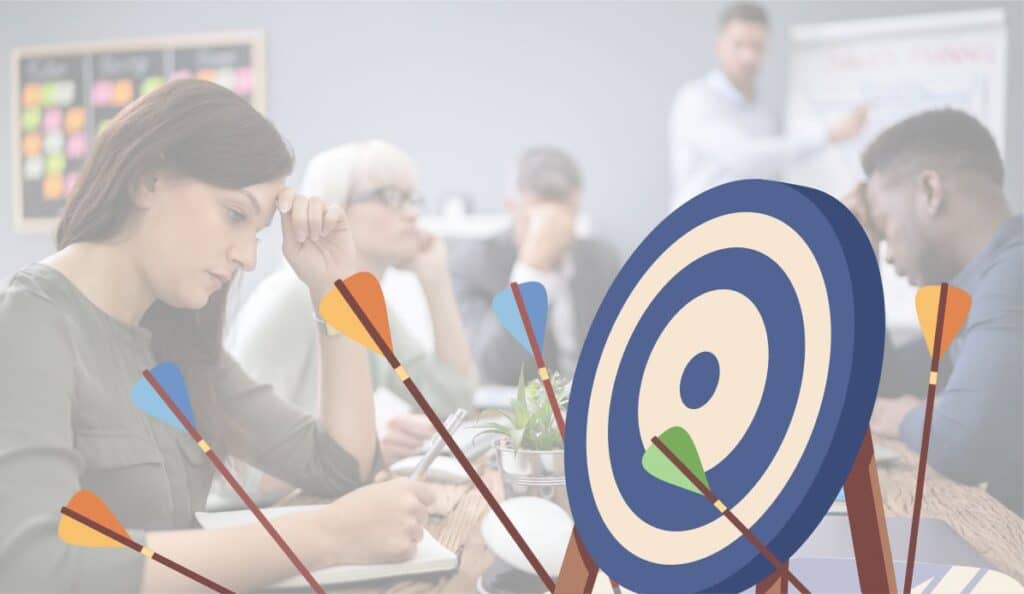
Customer Service Training Mistake
#4:
Using Traditional Learning Strategies
Customer service requires a different approach to training
I’ve been involved in learning and development most of my adult life. I’ve collaborated with some of the most brilliant learning strategists you can imagine. I’ve worked with companies around the world. For five years I sat on the Board of Directors of what is now the Institute for Performance and Learning.
Throughout this time, I have also been immersed in the science of creating sustainable loyalty – customer loyalty and employee loyalty. My career has been built on helping organizations develop the people skills and organizational practices that achieve this.
Traditional learning approaches won’t work
One of the things I learned early on is that, when it comes to customer service, traditional learning strategies don’t work. If you apply the same format and structure to customer service training that you use for training in, say, project management or IT skills, it will fail. I’ve seen it happen dozens of times. It will fail to engage participants, it will fail to stimulate adoption of new skills and, most importantly, it will fail to make the kind of sustained difference you’re looking for.
The learners are already experts – sort of
What makes customer service training so different? There are a few things. The first is that, unlike training for most other subjects, the majority of people who enter a customer service class already have preconceived ideas as to what skills are required for the job. They know what customer service is, and have opinions on what service people should do and shouldn’t do.
It’s completely understandable. After all, we all have vast experience in being customers. In that respect, we are, by definition, experts. The problem is that this expertise in being customers doesn’t translate to knowing the skills, behaviours and mindsets for creating outstanding experiences. It’s not just common sense, as many believe. There is a reproducible science to creating consistently outstanding experiences
Customer service trainers need exceptional interpersonal skills
This ‘I already know this stuff’ learner mindset means that a trainer’s first job is to successfully dismantle a number of these preconceptions before introducing new concepts or skills. As we all know, asking people to change or rethink any belief isn’t an easy task. To be successful, a trainer needs considerable interpersonal skills, a solid strategy and more than just a touch of charisma.
Customer service trainers have to walk a delicate tightrope. They have to be able to approach seemingly simple, basic skills such as body language, verbal language, smiling, caring, eye contact, etc without coming across as trite, condescending or preachy. They have to convey the deepest respect for the experience and professionalism of participants, while at the same time persuading them to abandon old habits and adopt new ones.
The course needs “aha” moments and the element of surprise
The design of the training also has to be carefully crafted. Because many participants are already anticipating some of the content and may have predispositions to it, you have to take a different approach than you might for other kinds of training.
Take the simple concepts of learning plans and agendas for example. Normally these are important parts of the learning experience. Not so much in customer service training. Imagine students, already with preconceptions about customer service, reading the lesson plan item, “The importance of smiling.” You can already see the cringing, hear the silent groans and the thoughts of “been there, done that, this is way too basic.” Your learners are now disengaged before you’ve even begun – and the fact that you’ve designed an absolutely brilliant segment on this skill becomes irrelevant.
A more effective approach is to kind of sneak up on the learners. Approach the content a little indirectly and use exercises and experiential learning to create ‘aha’ moments of discovery. Use a little misdirection, spring a few traps and take people by surprise.
We have a whole arsenal of these, and they consistently delight (and educate) learners. A customer service workshop attendee in Texas once told us with a big smile, “I feel like I’ve been getting hit upside the head by two-by-fours all day. I love it!” To this day, our trainers still refer to them as 2×4 exercises. The thing is, when learning comes from an unexpected direction, predispositions don’t get in the way and it’s easier for people to see things through a different lens.











